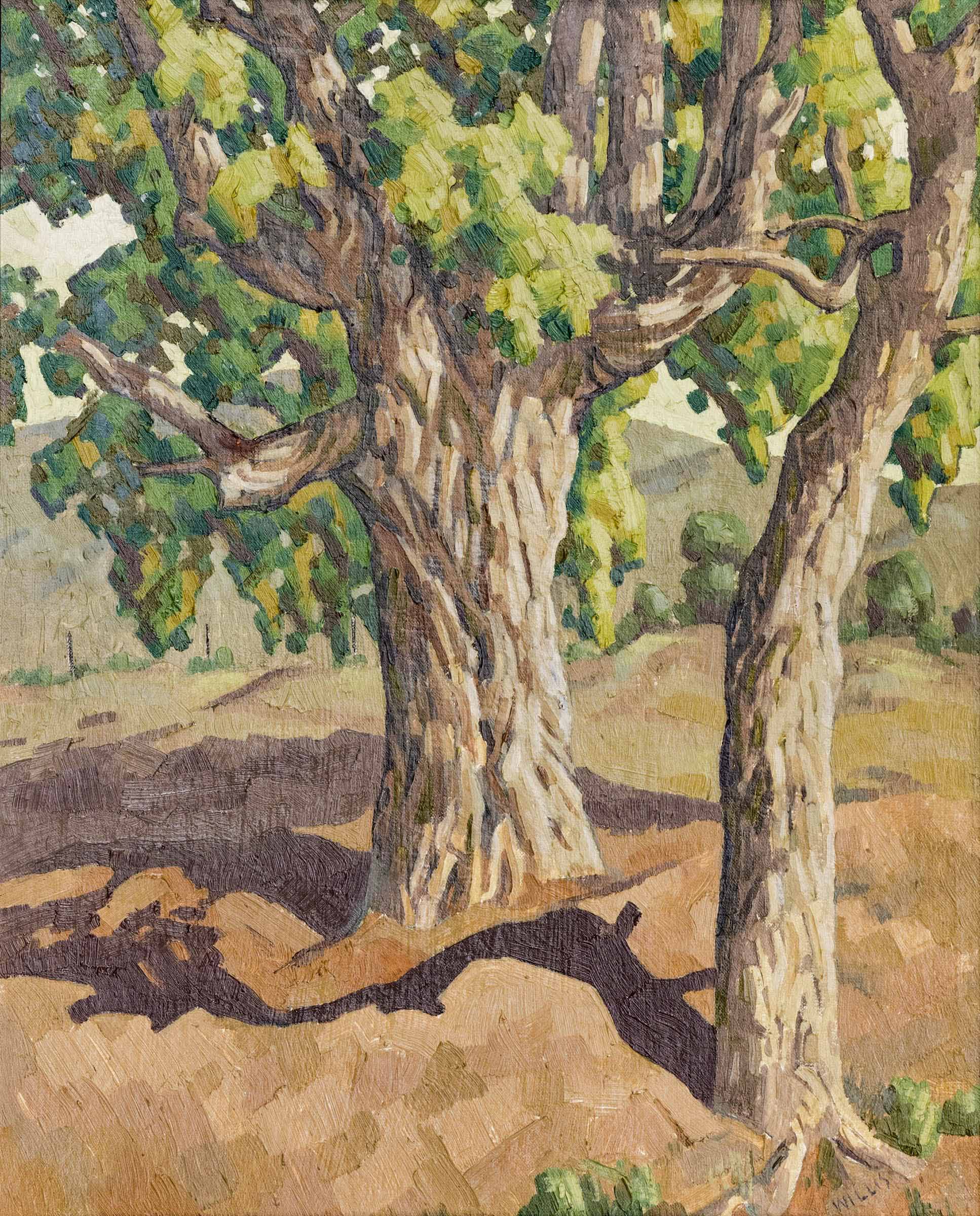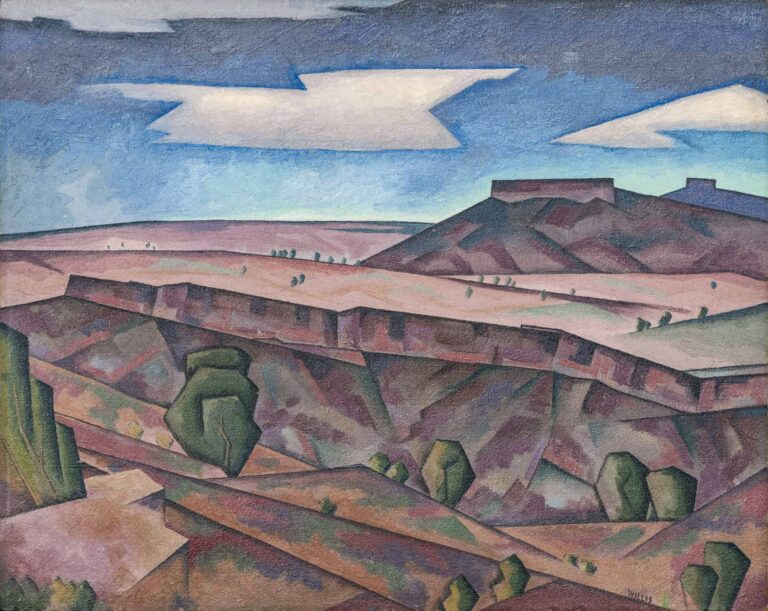Cottonwoods is a deceptively simple painting by an artist known in his day as an “extreme modernist.”1 Each individual brushstroke is legible: sunlit trees take form through the masterful placement of light and dark tones side by side in either short, stubby strokes or long, narrow strokes, which gracefully develop a sense of texture.
How Cottonwoods is unapologetically “modern” (by 20th-century standards) is fully understood in comparison to Brooks Willis’s painting Desert, made the same year. Desert takes the more immediately “modern” approach of abstraction, reducing its subject to geometric shapes. Cottonwoods, however, operates not on the level of style but on the level of technique, distilling the very concept of a painting to its most basic materials and methods.


